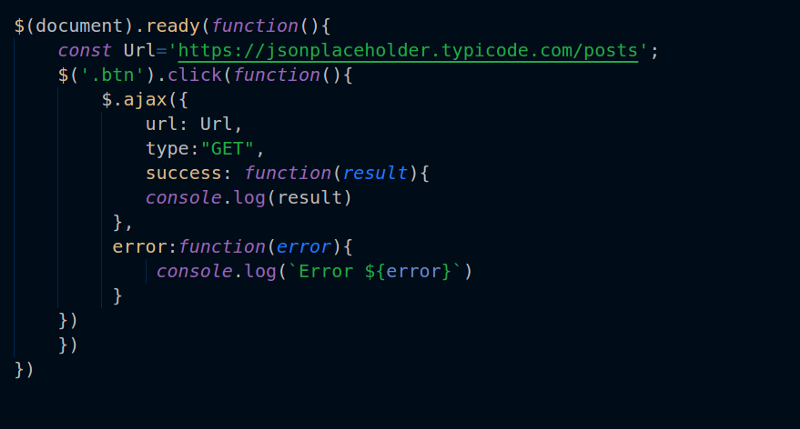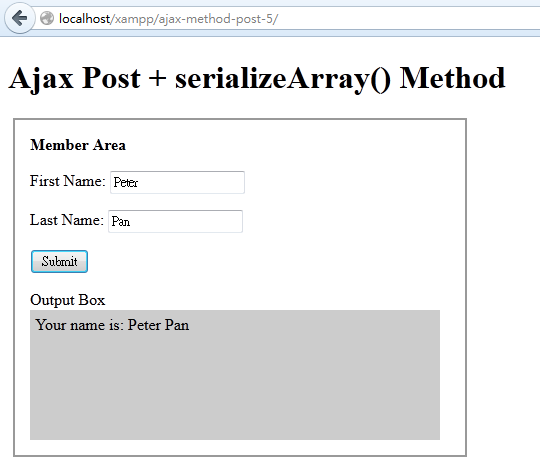

If necessary, it is possible to use any other library, e.g., jQuery though, the Data Adapter is functional enough. This article describes using the special An圜hart Data Adapter.

#$.AJAX METHOD MAP OBJECT HOW TO#
There are a lot of ways how to add the maps into the charts. It is better to add the root map the same way:
#$.AJAX METHOD MAP OBJECT DOWNLOAD#
Īny other An圜hart components can be included separately the same way as AnyMap, but it's better to include, which can be found on the same download page. Reference the AnyMap JavaScript file in the section of your web page.

Removed, or false if the element does not exist. Returns true if an element in the Map object existed and has been Removes all key-value pairs from the Map object. Object does not implement an iteration protocol, and so objects are not directly iterable using the JavaScript Iterable, so it can be directly iterated.

A common way to do it is through the length of the array returned from Object.keys(). The number of items in a Map is easily retrieved from itsĭetermining the number of items in an Object is more roundabout and less efficient. Object.getOwnPropertySymbols does the same String-keyed properties even if non-enumerable Object.keys includes only own, enumerable, Includes only enumerable string-keyed properties But note that no single mechanismĪll of an object's properties the various mechanismsĮach include different subsets of properties. The order was first defined for own properties only in ECMAScriptĢ015 ECMAScript 2020 defines order for inherited properties as well.Ībstract specification operations. This was not always the case, and the order is complex. Way: A Map object iterates entries, keys, and values inĪlthough the keys of an ordinary Object are ordered now, The keys in Map are ordered in a simple, straightforward Like the accidental keys issue, this can also be mitigated by usingĪ Map's keys can be any value (including functions, Setting user-provided key-value pairs on an Object may allowĪn attacker to override the object's prototype, which can lead to ()Ī Map is safe to use with user-provided keys and values.Object.prototype._lookupGetter_() Deprecated.Object.prototype._defineSetter_() Deprecated.Object.prototype._defineGetter_() Deprecated.


 0 kommentar(er)
0 kommentar(er)
